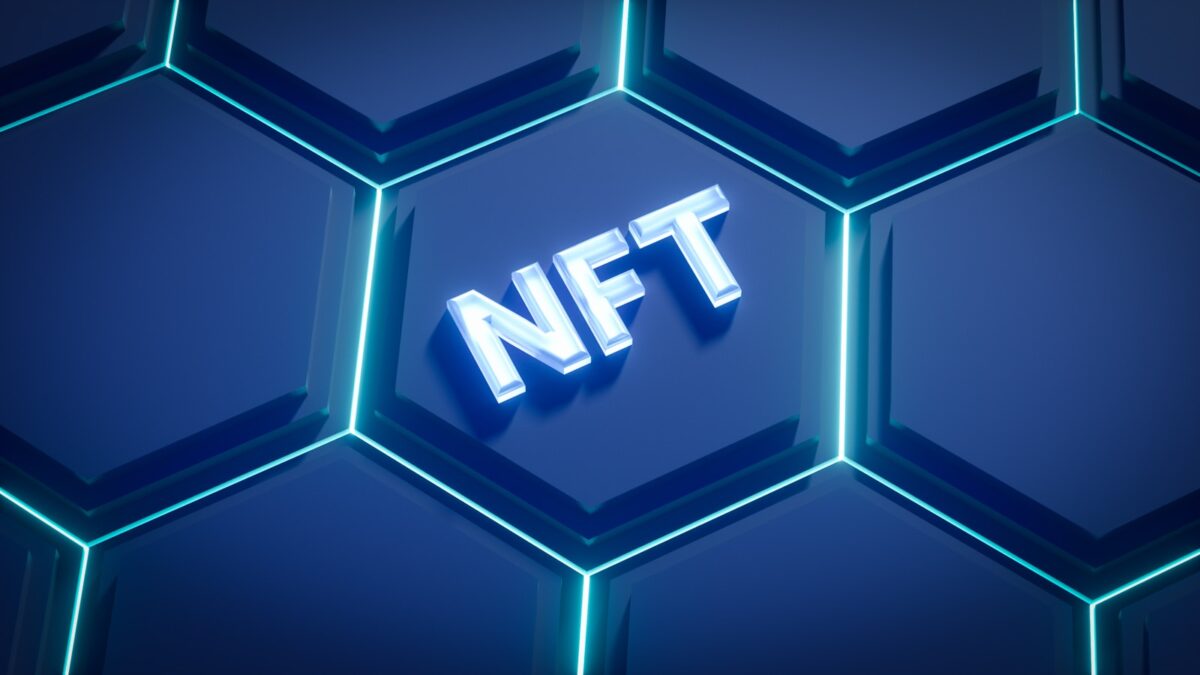
Proof of work explained

The backbone of bitcoin’s security lies in a computational challenge that requires miners to solve a complex puzzle involving cryptographic hashes. This process demands significant energy consumption and computational power, directly linked to the network’s difficulty adjustment. Miners compete to find a hash value below a target threshold, ensuring that block validation remains unpredictable and resistant to manipulation.
This method enforces consensus by making it economically unfeasible for malicious actors to alter transaction histories. Each valid solution confirms transactions and appends new blocks, securing the blockchain against fraudulent attempts. The increasing difficulty calibrates mining efforts, maintaining consistent block creation times despite advances in hardware performance.
Exploring this mechanism reveals why energy expenditure is integral rather than wasteful: it serves as a deterrent against attacks while enabling decentralized validation without trusted intermediaries. By analyzing how hash functions transform inputs into fixed-length outputs and how miners iterate through countless possibilities, one gains insight into the robust security model underpinning bitcoin’s trustless environment.
Proof of Work in Blockchain: Technical Foundations and Operational Insights
Consensus mechanisms are fundamental to decentralized networks, enabling distributed participants to agree on a single version of the ledger without centralized control. One of the earliest and most influential consensus algorithms was introduced by Bitcoin, which utilizes a computational challenge that requires miners to solve complex cryptographic puzzles. This approach ensures network security by making it prohibitively expensive to alter transaction history, as attackers would need to outperform the entire mining network’s combined computational power.
The validation process within this system depends heavily on hash functions–mathematical algorithms producing fixed-length outputs from arbitrary inputs. Miners repeatedly compute hashes while adjusting a variable called a nonce until they find a result below a specified target threshold. This target defines the difficulty of the puzzle, dynamically adjusted approximately every two weeks in Bitcoin’s protocol to maintain an average block time near 10 minutes. Such regulation sustains predictable transaction throughput despite fluctuations in total energy expended by mining operations.
Operational Mechanics and Security Implications
The act of mining involves intense computation aimed at discovering a hash meeting certain criteria, which serves as evidence that significant computational effort has been expended. This mechanism deters fraudulent activity because altering any part of the blockchain would require redoing all subsequent calculations faster than the rest of the network combined–a task considered practically infeasible due to the enormous energy consumption involved. Consequently, security here is intrinsically linked to energy-intensive computations that validate new blocks and preserve ledger integrity.
From an experimental viewpoint, analyzing how variations in network hash rate affect block discovery times reveals resilience built into this method. For instance, during periods when many miners join or leave Bitcoin’s network, difficulty adjustments recalibrate the puzzle’s complexity. This feedback loop maintains consistency in block intervals and encourages steady participation by ensuring rewards remain attainable yet challenging enough to prevent trivial solutions.
- Hash Function Role: Ensures output unpredictability and collision resistance critical for puzzle robustness.
- Nonce Variation: Enables iterative guessing that underpins mining competition among nodes.
- Difficulty Adjustment: Balances energy expenditure with network performance over time.
The relationship between computational work and verification also exemplifies trustless consensus–participants do not need prior knowledge or trust but rely instead on verifiable mathematical proofs embedded in each block. This paradigm shift allows permissionless participation where anyone can contribute hashing power and participate in transaction validation without central authorities governing access rights or data authenticity.
This system’s design invites further inquiry into optimizing energy efficiency without compromising security–a topic widely researched through alternative consensus methods such as Proof-of-Stake or hybrid models. While these alternatives seek to reduce massive electricity use characteristic of PoW-based networks like Bitcoin’s, current implementations demonstrate unparalleled robustness proven over more than a decade under diverse real-world conditions.
The interplay between cryptographic puzzles, miner incentives, and decentralized validation mechanisms presents fertile ground for experimentation with novel hashing algorithms or dynamic difficulty schemes. Observing these parameters’ effects on network reliability encourages deeper understanding of distributed trust systems beyond surface-level descriptions, fostering critical thinking about future improvements in blockchain scalability and sustainability.
How PoW Secures Blockchain
The mechanism securing blockchain networks like bitcoin relies on a computational challenge requiring miners to solve a cryptographic puzzle. This task involves repeatedly hashing block data until finding a hash value below a specific target, dictated by the network’s difficulty. By forcing miners to expend significant energy resources and time, this approach prevents malicious actors from easily altering transaction history, thus ensuring security.
This process creates a decentralized consensus, where nodes agree on the valid chain based on the cumulative effort invested in solving these puzzles. Since each new block requires substantial computational power to append, attackers would need more than half of the total mining capacity to manipulate the ledger, making such attacks prohibitively expensive and impractical.
The Role of Hashing and Difficulty Adjustment
Every attempt at solving the puzzle produces a unique output called a hash, generated by applying a cryptographic algorithm like SHA-256 in bitcoin. Miners adjust an arbitrary number called a nonce within the block header to change this hash. The goal is to find a hash with enough leading zeros that meets the current difficulty level.
The protocol regularly updates this difficulty approximately every 2016 blocks (roughly two weeks) to maintain an average block time near 10 minutes in bitcoin. If miners collectively increase their computing power, difficulty rises accordingly, requiring more attempts per successful solution. This dynamic ensures consistent network performance despite fluctuating mining capabilities.
Energy Consumption as Security Backbone
The significant energy expenditure required for these computations acts as an economic deterrent against double-spending or rewriting transaction history. Mining operations consume vast amounts of electricity globally; however, this cost translates into tangible security guarantees for participants relying on blockchain immutability. For instance, studies estimate bitcoin mining consumes around 100 terawatt-hours annually, reflecting its robust defense through resource commitment.
Decentralization and Consensus Integrity
The distributed nature of mining across numerous independent entities reinforces consensus reliability. Each miner competes to solve puzzles independently but must broadcast solutions promptly to receive rewards. This competition aligns incentives toward honest behavior since invalid or conflicting blocks are rejected by the majority of nodes following agreed-upon rules.
- This competitive environment reduces risks associated with centralized control or censorship.
- An attacker attempting to forge transactions must surpass combined honest mining power – often exceeding 50% – which is economically unfeasible in large networks like bitcoin.
- The transparency of hash validation enables all participants to verify solutions without trusting any single source.
Case Study: Bitcoin’s Resilience Against Attacks
Bitcoin’s history illustrates how high computational barriers thwart attempts at rewriting transaction records. Notably, despite multiple speculative concerns about potential “51% attacks,” no successful long-term chain reorganizations have occurred due to enormous collective hashing power maintained by global miners. This robustness arises from continuous puzzle-solving effort aligned with protocol-enforced difficulty adjustments ensuring sustained protection over time.
Implications for Future Blockchain Designs
The model leveraging resource-intensive challenges provides foundational insights for designing secure distributed ledgers beyond cryptocurrencies. Experimentation with alternative puzzle schemes or hybrid consensus methods aims at balancing energy efficiency with comparable resistance against fraudulent manipulation. Understanding how these elements interact deepens critical evaluation of emerging protocols seeking scalable yet secure consensus mechanisms in various application domains.
Mining Process Step-by-Step
The initial stage in the mining cycle involves miners collecting unconfirmed transactions from the network and assembling them into a candidate block. Each transaction undergoes validation to ensure authenticity, preventing double-spending or invalid transfers. Once transactions are verified, miners append a unique number called a nonce to the block header and begin calculating its hash. This hash acts as a cryptographic fingerprint, representing the entire block data uniquely.
The core challenge lies in finding a hash value that meets the current difficulty target set by the blockchain protocol. This difficulty adjusts periodically to maintain an average block creation time–approximately every 10 minutes for bitcoin. Miners repeatedly change the nonce and recompute hashes until one satisfies the stringent requirement, demonstrating computational effort. This mechanism secures the network by making alteration of past blocks computationally impractical.
Detailed Mining Steps
- Transaction Collection: Miners gather pending transactions broadcasted across nodes, validating each against consensus rules.
- Block Assembly: Transactions are packaged into a candidate block with metadata including timestamp and reference to the previous block’s hash.
- Nonce Iteration and Hashing: A nonce value is iteratively modified; after each change, the miner recalculates the hash of the block header.
- Difficulty Compliance Check: The resulting hash is compared against the difficulty threshold; if it falls below this target, proof of computational effort is demonstrated.
- Block Broadcasting: Successfully mined blocks are propagated across nodes for independent validation and inclusion in their ledgers.
This process consumes substantial energy, reflecting intensive computations required for hashing attempts at large scale. However, this expenditure enforces trustless consensus, enabling decentralized ledger updates without central authority. Security emerges from economic incentives: altering historical data would demand redoing immense computation surpassing cumulative mining power, rendering attacks cost-prohibitive. Through continuous iteration of these steps, bitcoin’s distributed ecosystem maintains integrity while dynamically adjusting mining complexity.
Energy Use and Costs in Puzzle-Based Validation Systems
Mining operations rely on solving a complex cryptographic puzzle, where the difficulty level adjusts dynamically to maintain a consistent block time. This adjustment ensures that network consensus remains stable, but it also directly impacts energy consumption. As the difficulty escalates, miners must perform exponentially more hash computations, leading to increased electricity usage and higher operational costs. The relationship between puzzle complexity and energy demand is non-linear, creating significant variability depending on the network’s current state.
The process of achieving consensus through computational effort requires continuous validation of transactions by competing nodes. Each miner attempts to find a valid hash below a target threshold by iterating numerous nonce values. This trial-and-error method consumes vast amounts of energy, often supplied by specialized hardware optimized for hashing functions. For instance, Bitcoin’s mining ecosystem utilizes Application-Specific Integrated Circuits (ASICs) designed for SHA-256 calculations, which, despite their efficiency improvements over GPUs and CPUs, still require substantial power input measured in terawatt-hours annually.
Energy Efficiency and Hardware Impact
Advancements in mining hardware have contributed to improved energy efficiency per hash computed; however, escalating difficulty levels offset these gains. Data from major mining pools indicate that total network hash rate growth correlates strongly with increased energy use rather than proportional efficiency improvements. For example:
- In 2016, average power consumption per terahash was approximately 0.25 watts.
- By 2023, modern ASICs reduced this figure below 0.03 watts per terahash.
- Despite this reduction, the overall network hash rate expanded over tenfold in this period.
This expansion results in an aggregate rise in global energy demand attributed to mining activities.
Cost Structures Influenced by Puzzle Difficulty
The economic feasibility of validating blocks depends heavily on electricity prices and puzzle difficulty metrics. Mining profitability models incorporate real-time data on hash rate competition and network difficulty adjustments occurring roughly every two weeks for Bitcoin-like systems. An increase in puzzle complexity demands more computational cycles per successful validation attempt, thereby inflating operational costs significantly during high-difficulty epochs. Regions with low-cost renewable energy sources become attractive hubs for mining farms aiming to reduce expenses while maintaining competitive throughput.
Security Trade-Offs Linked to Energy Consumption
The security model embedded within this computational validation framework intrinsically ties to its energy footprint. High cumulative hashing power deters attacks such as double-spending or chain reorganizations by making malicious efforts prohibitively expensive energetically and economically. This creates a robust defense mechanism predicated on sustained investment into energy-intensive mining infrastructure. However, questions arise regarding environmental sustainability due to carbon emissions associated with certain electricity generation methods powering large-scale mining operations.
Experimental Approaches to Measuring Energy Impact
Recent studies employ empirical measurements combining electrical grid data with blockchain activity logs to quantify real-time energy consumption linked directly to network difficulty fluctuations. Controlled experiments simulating increased puzzle complexity demonstrate nonlinear scaling of power draw across heterogeneous mining setups using GPUs versus ASICs. These investigations reveal critical thresholds beyond which incremental security benefits yield diminishing returns relative to additional energy expenditure–prompting exploration into hybrid consensus mechanisms integrating lower-power alternatives without compromising decentralization integrity.
PoW vs Other Algorithms
The mining process in blockchain networks relies heavily on the chosen consensus mechanism, with proof-of-work (PoW) standing as one of the earliest and most established methods. PoW secures transactions by requiring miners to solve a computationally intensive hash-based puzzle. This difficulty adjusts dynamically to maintain consistent block times, ensuring robust security against attacks such as double-spending. Bitcoin exemplifies this approach, where miners expend significant energy resources to achieve network validation through cryptographic hashing.
Alternative algorithms like Proof-of-Stake (PoS), Delegated Proof-of-Stake (DPoS), and Practical Byzantine Fault Tolerance (PBFT) offer contrasting models for achieving consensus without relying on resource-heavy puzzles. These mechanisms emphasize different aspects of security and efficiency; for instance, PoS depends on stake ownership rather than computational effort, reducing energy consumption while attempting to maintain decentralization and resistance to malicious actors. The trade-off between security guarantees and environmental impact forms a core discussion point when comparing these systems.
Mining Difficulty and Network Security
In PoW networks, difficulty is an intrinsic parameter that calibrates the complexity of finding a valid hash below a target threshold. This system adapts approximately every two weeks in Bitcoin’s case, responding to fluctuations in total network computational power. Higher difficulty enhances security by increasing the cost of executing 51% attacks or rewriting transaction history. Conversely, some alternative algorithms bypass this challenge by implementing economic penalties or reward redistribution to deter dishonest behavior without complex puzzles.
The validation process under PoW involves miners competing to produce a block hash meeting strict criteria, which inherently ties security to physical resources expended during mining. By contrast, consensus models like PBFT utilize voting rounds among known validators to finalize blocks quickly but often at the expense of scalability or requiring trusted nodes. Experimental deployments reveal that while PoW excels in trustlessness and censorship resistance, other algorithms may provide faster confirmation times with varying degrees of decentralization.
- Bitcoin’s reliance on hash-based puzzles ensures high fault tolerance but entails substantial energy use due to escalating difficulty levels.
- Proof-of-Stake protocols reduce mining costs by assigning block creation rights proportionally to coin holdings rather than solving complex hashes.
- Hybrid approaches, combining elements from multiple algorithms, aim to balance mining intensity with enhanced throughput and lower latency.
The ongoing evolution in consensus design encourages systematic experimentation–evaluating how different validation techniques affect network robustness under adversarial conditions. Assessments involving testnets demonstrate that while PoW remains unparalleled for securing large-scale public ledgers like Bitcoin, alternative methods show promise for private or consortium chains prioritizing efficiency over maximal decentralization.
Real-World Applications of Computational Challenge Mechanisms
The adjustment of difficulty in cryptographic puzzles directly influences network security by controlling the rate at which new blocks are mined. This dynamic ensures that the computational effort required to produce a valid hash remains consistently challenging, deterring malicious actors from overwhelming the system. Validation through these complex cryptographic tasks enables decentralized consensus without reliance on trusted intermediaries, a principle demonstrated in prominent mining networks like Bitcoin.
Energy consumption remains a critical factor in the deployment of these protocols; however, ongoing innovations aim to optimize hashing algorithms and hardware efficiency. Future developments may incorporate hybrid approaches that balance energy expenditure with robust validation processes, preserving security while addressing environmental concerns. Exploring alternative consensus models inspired by this methodology could further diversify applications beyond cryptocurrency, including secure voting systems and distributed data integrity verification.
Key Technical Insights and Future Directions
- Difficulty Adjustment: Automatic recalibration maintains puzzle complexity in response to total mining power fluctuations, sustaining predictable block intervals and network stability.
- Security Through Computational Effort: The probabilistic nature of finding a suitable hash acts as a deterrent against double-spending and Sybil attacks by making fraudulent chain reorganization economically unfeasible.
- Consensus Formation: Distributed networks rely on cumulative validation of cryptographic challenges to agree on transaction history without centralized authority.
- Energy Considerations: While resource-intensive, current implementations incentivize participation with block rewards; research into low-power alternatives is critical for scalability.
- Emerging Applications: Beyond currency mining, puzzle-based validation mechanisms hold promise for timestamping services, tamper-evident logs, and decentralized identity verification frameworks.
The intersection of computational puzzles with economic incentives forms the backbone of trustless systems where consensus emerges organically from collective effort. Continuing experimental research into adaptive difficulty algorithms and energy-efficient hashing promises to extend applicability while mitigating ecological impact. Encouraging exploration into modular validation schemes will deepen understanding of how cryptographic challenges can underpin secure digital infrastructures worldwide.


